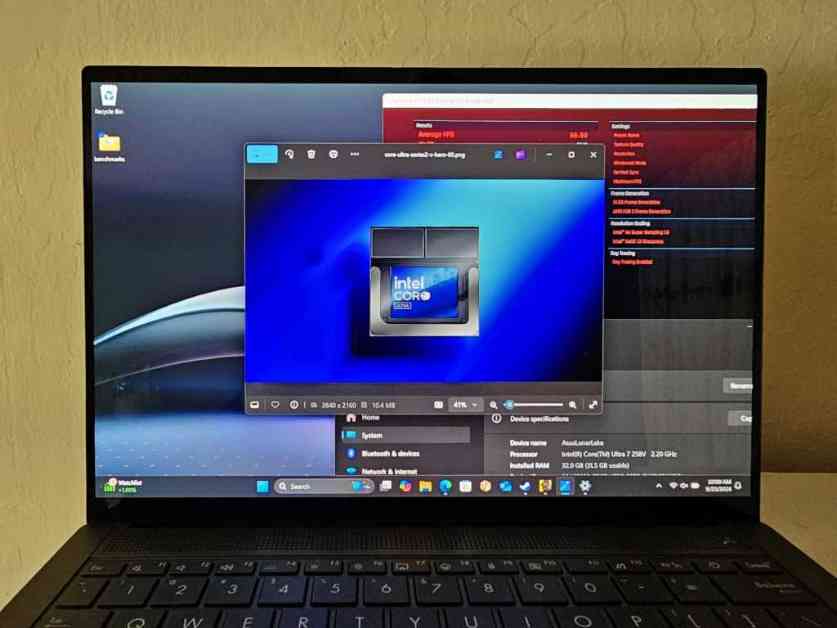Intel’s Lunar Lake Laptop: A Game-Changing Alternative to Qualcomm Devices
Intel’s Core Ultra Series 2, also known as Lunar Lake, has emerged as a formidable competitor to Qualcomm’s processors in the laptop market. Designed to prioritize low power consumption without compromising performance, Lunar Lake offers impressive capabilities that set it apart from its predecessors and competitors.
In a recent review of the Core Ultra 7 258V chip, Intel showcased the power and efficiency of Lunar Lake by highlighting its exceptional battery life and robust embedded GPU. The Core Ultra 7 258V chip, featured in the Asus ZenBook S14 laptop, may not outperform AMD’s mobile Ryzen processors in all aspects but excels in delivering a Snapdragon-like battery life and the ability to handle high-quality gaming experiences.
Comparative testing of Lunar Lake, Ryzen AI 300, and Snapdragon X Elite processors revealed interesting insights into their performance capabilities. Benchmark tests were conducted both while the laptops were plugged in and running on battery power to assess their maximum performance potential and efficiency during everyday use.
At the Computex 2024 show, where Intel unveiled Lunar Lake, promises were made of a “no-compromise experience” for users. The introduction of Lunar Lake laptops, including the Asus ZenBook S14, as Copilot+ PCs signifies a significant step towards enhanced AI features, set to be enabled by a Windows update later in the year.
When tested on CPU performance using benchmarks like Cinebench R23 and Cinebench 2024, Lunar Lake showed competitive results, although performance dropped when running on battery power. The emphasis on battery life over raw performance is evident in Intel’s strategy with Lunar Lake, a shift from its previous generation, Meteor Lake.
In graphics and AI performance testing, Lunar Lake’s integrated GPU and Xe2 graphics engine demonstrated impressive capabilities. The chip excelled in gaming benchmarks like Time Spy and Steel Nomad Light, showcasing its potential for handling graphics-intensive tasks.
The battery-life performance of Lunar Lake was a highlight of the review, with the laptop lasting an impressive 21 hours in a standard video rundown test. The efficiency of the chip in real-world scenarios, such as continuous work simulations using productivity apps, further emphasized its longevity and reliability.
In conclusion, Intel’s Lunar Lake represents a significant advancement in laptop processor technology, offering a compelling alternative to Qualcomm devices. While Lunar Lake may not be a direct “Snapdragon killer,” its balance of performance, efficiency, and battery life make it a strong contender in the market. As laptop processors continue to evolve, the choice between Lunar Lake, Ryzen AI 300, and Snapdragon X Elite ultimately depends on individual needs and preferences.
Overall, Intel’s Lunar Lake stands out as a powerful and efficient option for users seeking a high-performance laptop experience with extended battery life. With the promise of future updates and advancements in AI capabilities, Lunar Lake represents a significant step forward in Intel’s laptop processor lineup.











